Coping with Psychological and Emotional Effects of Cancer on Patients and Their Families – The Mind-Body Connection
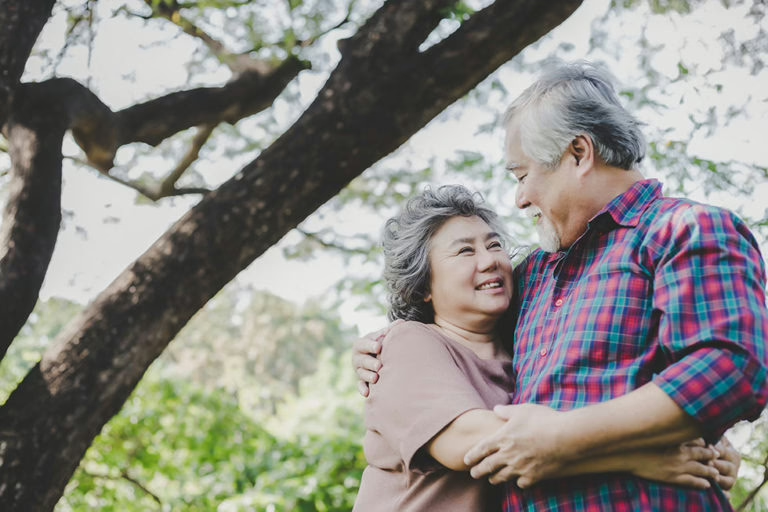
Link copied! For thousands of years, traditional healing systems such as those in Chinese medicine have embraced the role of the mind in the treatment and healing of diseases. Fast forward to the last century, we are now witnessing the same paradigm shift in western medicine along with a growing body of empirical science that is in support of this holistic approach towards healthcare. The attention to the mind-body connection is especially relevant in the treatment of cancer because the disease creates intense physical, psychological, and emotional pressure for the patient and their loved ones. Although less often talked about, the psychological and emotional effects of cancer can oftentimes be as overwhelming and debilitating as its physical toll. Emotional Effects of Cancer on Patients Before, during and after treatment, cancer patients are likely to experience a wide range of emotions that are foreign to them; feelings such as being out of control, anger, denial, sadness, fear, guilt, and helplessness. While these feelings are all normal, they can be unpleasant to experience. They can also be intense, and emotions can change rapidly by the day, the hour, or even minute to minute, possibly causing the patient to feel overwhelmed. Emotional Effects of Cancer on Families Family and friends of cancer patients may also experience these intense and complex emotional effects of cancer, depending on the closeness of each relationship. Sudden changes in roles, responsibilities, physical and emotional needs, as well as future plans, can cause feelings of isolation, insecurity, sadness, frustration, anger, and even resentment. For some families, facing the challenges of cancer together can strengthen their relationship. For others, the struggle to cope with the complicated emotions and lifestyle changes can lead them to experience intense and chronic psychological stress, which in turn, may create new problems and worsen existing ones. How do Our Minds and Body React to Stress? Psychological stress, or simply stress, is what we feel when we are under physical, mental, or emotional pressure. When we are under stress, our brain releases stress hormones such as adrenaline and cortisol in the body. These hormones help us get ready to respond to stress, whether it is to run, fight, or even freeze. While small amounts of stress can be beneficial and healthy to us, excessive and long-term stress keeps the body trapped in a constant state of tension, also known as “fight or flight” mode. This often develops into physical and mental health problems. Image 1. Physical effects of long-term stress include a weaker immune system, and a greater risk of heart attacks, diabetes, and mental health disorders like depressive or anxiety disorders. In cancer patients, long-term psychological stress may influence a cancerous tumour’s ability to grow and spread, and may even affect cancer outcomes [2][3] In contrast, cancer patients who are able to manage their stressors are less at risk of developing depressive disorders, neurotic and adjustment disorders, and substance use disorders, which in turn significantly reduces their risk of premature death. [4][5] The same goes for families and caregivers of cancer patients. Partners of cancer patients, in particular, are expected to bear a large proportion of the stressors and burdens that follow in the course of cancer and are often at greater risk of these negative health outcomes. [6] Specifically, cancer caregiving has been related to increased blood pressure, dysregulation of the autonomic nervous system, hypothalamic-pituitary–axis dysregulation, immune changes, and poor health-related behaviours. Those who are able to use effective coping strategies to manage their stressors, such as relaxation and stress management techniques, are more likely to experience decreased caregiver burden, decreased depression, and better adjustment. What You Can Do to Cope with Stress To quote Nido Qubein, “Your present circumstances don’t determine where you can go; they merely determine where you start.” If you identify as part of this vulnerable population, then it is important to note that self-care and adequate coping and emotion regulation skills are necessary for the preservation of your health and well-being. Moving forward, the following coping strategies may serve to provide some desired relief. 1) Training in relaxation techniques, and stress management Cancer and its treatment put your body under constant stress and inflammation. Likewise, excessive stress from caregiving duties can result in compassion fatigue and poorer quality of living for caregivers and families of cancer patients. In such instances, mind-body relaxation techniques such as the Emotional Freedom Technique (EFT; Image 2) and Tension Release Exercise (TRE; Image 3) can be beneficial in maintaining mental health. By releasing excess stress and tension through EFT and/or TRE you can help support your body’s proper physiological and psychological function. Image 2. EFT relies on fingertip tapping to apply pressure on 9 meridian points to reduce the stress or negative emotion you feel from your stressor, ultimately restoring balance to your disrupted energy. [7] Image 3. Tension and Trauma Release Exercise (TRE) is a somatic-based approach comprised of a series of exercises that safely stimulates your psoas muscles – these muscles are where we often store physical, emotional, and psychological stress in our bodies over the course of our lives. The shaking, or neurogenic tremors, can result in a release of deep tension, stress, and trauma, which helps the body to return back to a state of balance. [8] EFT and TRE interventions are especially good for when You are stressed and anxious You don’t feel like talking about your stress Have difficulty sleeping Would like a way to support mind-body-spirit wellness 2) Talk therapy Negative thoughts and emotions can create stress in our lives by affecting the way we feel, and colouring our experiences so that many other things that we experience seem more overwhelming. Talk therapy, such as Cognitive Behavioral Therapy and Acceptance and Commitment Therapy have been consistently found to be effective in the treatment of severe stress. [9][10] However, you don’t need to be experiencing severe stress to benefit from this mode of treatment. Talk therapy can benefit anyone who is going through a difficult time or
Managing Mental Health Struggles With TCM Treatments and Therapies
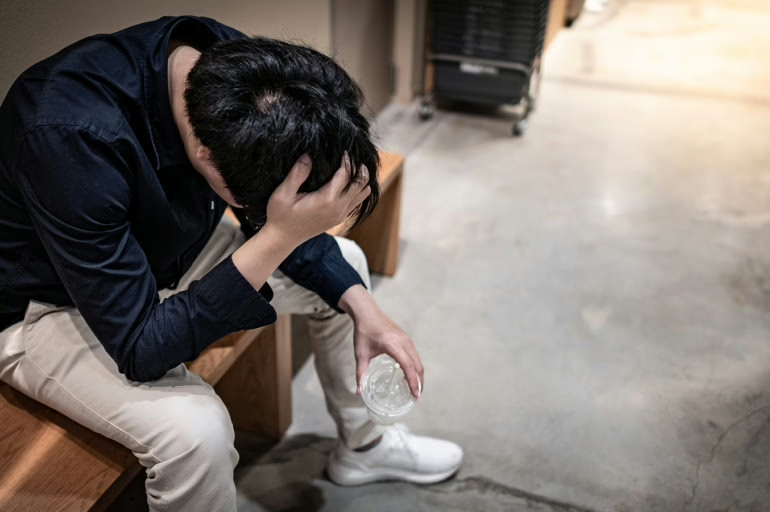
Link copied! In a recent survey conducted by the World Health Organization, it was reported that the demand for mental health services increased significantly, and issues such as bereavement, isolation, unemployment and fear are triggering mental health conditions in new patients and exacerbating the symptoms in patients with pre-existing conditions. [1] In our clinics, physicians see a 117% increase in the number of patients with mental wellness concerns such as anxiety, sleeplessness linked to emotional concerns in the first half of 2021 compared to the 6 months before. Most of whom were not aware of their underlying mental state of health and were there to seek help for more visible chronic conditions. Mental health has always been a heavy topic to broach, both from the standpoint of the person suffering from it as well as the person who is trying to offer help. However, it is important to know that with the right treatment and support, those living with mental struggles can lead fulfilling and meaningful lives. What is mental health in TCM perspective? In TCM perspective, the organs that are most closely linked to mental health are the Heart and the Liver. The Heart controls the mind, and in turn the spirit, and regulates the decision-making process. When the mind is in a state of unrest, we often see patients with the following symptoms: The other organ closely related to mental wellness is the Liver. In TCM, Liver is responsible for regulating Qi and energy flow in our body. Thus, when the Liver is constricted, Liver Qi (Liver energy) becomes stagnated and energy cannot flow freely in the body. Common symptoms of Liver Qi stagnation: Dull or persistent headaches, constant worrying of issues, even poor sleep quality are often observed in patients with anxiety High blood pressure, red and swollen eyes, and bad temper are often seen in patients with anger management issues Poor appetite, constant sighing, and suppressed mood and energy are often seen in patients with depression TCM recommended treatments and therapies for mental health Herbal Medication TCM herbs can help to improve emotional health and reduce stress by regulating Liver Qi. When there is emotional stress involved, we usually say that the Liver Qi is stagnant. Improving circulation of Liver Qi with herbs like Jia Wei Xiao Yao San will help to reduce stress and improve emotional health. When it comes to home remedies, some common herbs that are good for Heart Fire include longan and lotus seeds. These herbs can clear excessive heat from the body, including Fire originating from the Heart. In the clinic, we will prescribe a combination of cooling herbs to clear the Heart Fire and stomach-protecting herbs to balance the digestive system as cooling herbs can put burden on the stomach and cause gastric issues. Bringing the Heart back to balance helps to regulate emotional distress like anxiety Acupuncture Acupuncture is another effective way of reducing Liver Qi stagnation, which is a common deficiency linked to mental wellness in TCM. Common acupoints like Tai chong, Nei guan, Tai yang, and Feng chi are stimulated to soothe the mind and improve the flow of Liver Qi. To increase the efficacy, we use a detox-ing needling technique at these acupoints. This technique involves manipulating the needle in an anti-clockwise motion to release the Qi right before removing the needles. Cupping and Guasha Cupping and Guasha (Scraping) can help to release tension in the muscles of our neck and back to ensure a healthy flow of Qi in our body. Better Qi and Blood circulation is also beneficial in improving patients’ sleep quality. Adequate rest is vital for our body to rest, detox, and re-energize to keep our mental health in a prime condition. Moxibustion For patients with depression, we use moxibustion on Bai hui, Qi hai, and Guan yuan acupoints to balance the Yin and Yang energies in the body. We generally avoid using moxibustion for patients experiencing excessive anger to prevent adding more fire or heat to the body. Other therapies for mental health Electro-Lymphatic Therapy(ELT) Our lymphatic system is a giant network of vessels that drains from the peripherals towards the cardiovascular system. Its two main functions are to provide immune support and drain away excess lymph fluids and waste products. It is a passive system that relies on the contraction of muscles to move the lymph fluids within the vessels along. Electro Lymphatic Therapy is a technology that promotes lymphatic drainage in the body. When there is an excess of inflammatory cells present near the brain or any part of the body, the lymphatic system becomes congested and could lead to increased risk of infections and psychiatric concerns. [2] ELT helps to promote lymphatic drainage and clear inflammatory cells away from congested parts of the body. In the clinic, we use an FDA-registered Electro-Lymphatic Therapy (ELT) machine to enhance the flow of the lymphatic system. With the variable penetration depths, we are able to clear both superficial and deep layers of the lymphatic system. A healthy, decongested lymphatic system is vital to the body’s immune system and helps to alleviate mood disorders and improve mental health. Cell Pro Therapy (CPT) Negative ions are naturally occurring and they help to maintain voltage equilibrium of our cell membranes (essential for cellular metabolism). However, due to excessive exposure to free radicals, EMF, and carcinogens in our environment, this voltage equilibrium is disrupted in our body, and cellular metabolism is reduced. Brain activity produces metabolic wastes which are usually removed by the glymphatic system. An accumulation of such waste results in an increased risk for neurological disease and a decrease in brain health. [3] In the clinic, we use the MiEnergy machine from Japan to supply up to 20 million negative ions for the body. As these negative ions enter the body, the negative ions enhance cellular metabolism and stimulate patients’ parasympathetic nervous system. The 15 – 20 minutes therapy is so calming that some patients may even experience deep sleep during the session.
Top 30 Foods You Should Eat To Boost Your Fertility
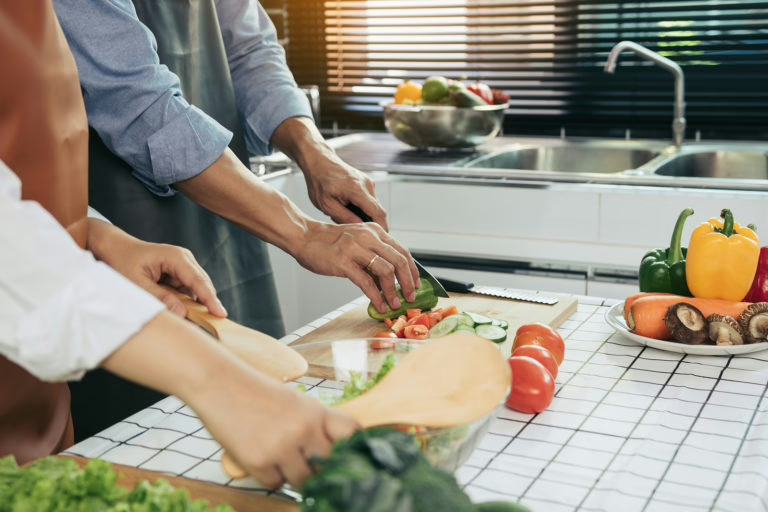
Link copied! Optimise your diet for better fertility In general, a myriad of reasons can affect fertility, ranging from age to other reproductive issues. While many of these factors are out of our control, one key factor that we can control is our diet and lifestyle. In a study conducted in the United States of America (USA), participants who have followed a combination of five or more low-risk lifestyle factors, including diet, physical activity and weight management have shown to significantly reduce ovulatory disorder infertility [1]. While there is no specific food or fertility diet that can miraculously guarantee conception, eating a nutritious and well-balanced diet will definitely improve your overall well-being and in turn, boost your reproductive health. In this article, we will list the top 30 foods that you can incorporate into your fertility diet. Everyday food that can boost fertility for both male and female Walnuts Walnuts are a great source of alpha-linolenic acid, a type of Omega-3 polyunsaturated fatty acid (PUFA) in plants. For males, Omega-3 PUFAs are crucial for sperm maturation and membrane function, while for females, they have been shown to have a positive impact on fertility, potentially via improving oocyte quality and embryo implantation. Walnuts are also rich in magnesium, which is necessary for the production of progesterone and maintaining a good blood supply to the womb, both of which helps prepare the womb for pregnancy. How to eat: You can choose to take a handful of walnuts as a snack or add them to your salads, chicken, or oatmeal as a nutritional crunch. Eggs Eggs, especially the egg yolks, are loaded with many essential nutrients such as iron, calcium, zinc, Vitamin B6, folate, Vitamin B12 and Vitamin A. Eggs from pasture-raised chickens are also packed with fertility-boosting Omega-3 fatty acids, eicosapentaenoic acid (EPA) and docosahexaenoic acid (DHA), which studies have shown to potentially prolong certain reproductive functions into advanced maternal age [2]. How to eat: You can choose to eat eggs in many different ways: hard-boiled, soft-boiled, scrambled, poached etc., but remember to eat the whole egg with the yolk included. Pomegranates Rich in antioxidants, pomegranates have shown to be beneficial to both female and male fertility. For females, antioxidants can stimulate the uterus by improving blood flow to the womb as well as promote healthy uterine lining for implantation. As for males, antioxidants can improve sperm quality. Pomegranates are also rich in important vitamins such as Vitamin C and E, and folic acid, all of which are beneficial when trying to conceive. How to eat: You can eat the pomegranate seeds as a healthy snack, or even drink pomegranate juice. Ideally, take ½ to 1 cup of pomegranate juice occasionally. Take note that pomegranates may interact with certain medications, like blood thinners, so consult your doctor or physician first before incorporating it into your diet. Citrus fruits (Oranges, Grapefruits) Citrus fruits are a great source of Vitamin C, which can help boost fertility and hormone levels in females, as well as improve males’ sperm count and quality. Grapefruits and oranges also contain polyamine putrescine, which has been associated with the potential to improve egg and semen health. How to eat: Enjoy orange slices on their own, or you can incorporate citrus fruit juices into your smoothies. Take caution that grapefruit juice can interact with certain medications, so speak to your doctor to check whether grapefruit juice is suitable for you. Pomelo Pomelos are rich in Vitamin C, which not only helps boost the immune system but also helps in boosting fertility and hormone levels. Vitamin C also enhances sperm count, sperm motility and sperm quality, which in turn ensures higher chances of conception. Pomelos are also packed with other fertility-boosting nutrients such as potassium, calcium and Vitamin B, which can help regulate ovulation and create a favourable environment for the ovulating eggs. How to eat: You can simply enjoy pomelos as a fruit snack. Pineapple Pineapples are a great source of Vitamin C. A 1 cup serving of pineapples will provide 46% of your daily recommended Vitamin C levels. Low Vitamin C levels have been associated with Polycystic Ovary Syndrome (PCOS), and so it is vital to reach your daily recommended intake of Vitamin C. Pineapples also contain the natural enzyme bromelain, which has anti-inflammatory effects. Inflammation may impede fertility, and chronic inflammation can even encourage the body to suppress ovulation. Taking bromelain can encourage the immune system to deviate from an inflammatory state. How to eat: Opt for fresh pineapples whenever possible, as most of the bromelain is destroyed in canned pineapples due to the heat in the canning process. You can choose to eat it fresh or even grilled. Take note not to over-consume pineapples, as they can lead to increased uterine contractions. Blueberries Blueberries are not only high in Vitamin C and folic acid, both of which are essential fertility boosting nutrients, they are also packed with antioxidants. Antioxidants help in reducing damage to reproductive cells that are caused by environmental toxins and “free radicals”, thereby ensuring reproductive cells are healthy and functioning normally to boost fertility. How to eat: You can just take a handful of blueberries to enjoy as a snack, or add them to your salads, smoothies, or yoghurt. Sunflower seeds Roasted, unsalted sunflower seeds are packed with Vitamin E, which have been shown to help boost sperm count and motility. Sunflower seeds are also loaded with Omega-6 fatty acids and a small amount of Omega-3 fatty acids, which are known to impact fertility positively. Additionally, they are packed with other fertility-boosting nutrients such as zinc, folate and selenium. How to eat: You can take sunflower seeds as a snack, or add them to your food for additional flavour and crunch. Mature cheeses Mature cheeses, such as aged cheddar and parmesan are high in polyamines, which play an important role in our reproductive system. They are specifically high in polyamine putrescine, which may help improve sperm health and egg health, particularly in females aged
So you’ve booked your first Electro-Lymphatic Drainage Therapy (ELT) appointment. What next?
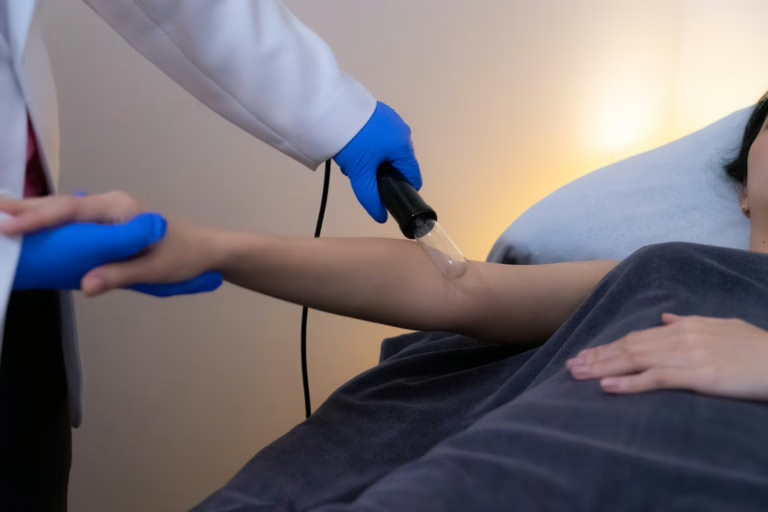
Link copied! First of all, congratulations! You’ve just secured your first step towards taking charge of your wellness and to help yourself #feelbetterfaster. As this is your first experience with Electro-Lymphatic Drainage Therapy (ELT) and you may not be sure what to expect, so we are here to help! Read on to find out more about lymphatic health, how ELT can benefit you and what to expect in your first ELT session. Why did your Physician recommend ELT to you? Having a healthy smooth-flowing lymphatic system is an important building block to optimal wellness! Hence, ELT is recommended whether you are looking to improve your general wellness or you have a serious chronic condition. To grow strong and healthy like a big tree, a smooth lymphatic system helps you to build strong roots, to detoxify effectively and to improve your immune function. What is the lymphatic system and what does it do? The lymphatic system is a huge network of tissues and organs that help the body get rid of unwanted materials. Its main function is the transport of lymph, a fluid containing white blood cells which help the body fight infections. The lymphatic system works with the circulatory system to help the body get rid of toxins in a process more commonly known as detoxification. The main functions of the lymphatic system can be summarized into three big aspects: Maintain a healthy immune system to detect health issues (important for all of us in this current global situation but particularly important for patients with cancer and auto-immune conditions) Clear toxins from the body Maintain balance of body fluids by facilitating the return of fluids to the heart Our lymphatic system is closely tied to detoxification and the maintenance of a healthy cellular environment. When there is congestion in the lymph system, cellular detox tends to decrease, leading to waste accumulation and less optimal nutritional absorption by cells. Over time, this can result in cell malnourishment and poor health. This phenomenon is like having a “choked or congested sink” at the cellular level. Over time, the body becomes prone to sickness as toxins accumulate and cells become less able to fight diseases. What causes lymphatic congestion? Lymphatic congestion occurs as a result of various reasons, including lifestyle and non-lifestyle factors such as the below: These factors result in poor lymphatic drainage which could lead to dire consequences like poor health, compromised immunity or even lymphedema (swelling due to excess fluids in tissues). How does ELT help? Electro-Lymphatic DrainageTherapy (ELT) is an FDA-approved, non-invasive technology that helps to stimulate proper flow and drainage of the Lymphatic System. It makes use of a combination of vibrational, light, and electrical waves to stimulate the lymphatic flow via the dissociation of proteins that have been trapped in the interstitium. While the surface technique is patterned after Manual Lymphatic Drainage Massage, ELT can promote lymphatic drainage at a deeper level and in a less amount of time. The relaxing and pain-free therapy makes it an excellent choice for individuals looking to improve their health without compromising on comfort. How does ELT work? ELT machines are equipped with glass probes that contain inert gases Argon, Krypton and Xenon. The ionization of these gases produces energy and ions which penetrate the lymph system to break down protein and wastes. This process is what contributes to detoxification and helps promote lymphatic drainage at the lymph nodes. During the therapy, the therapist will glide the probes in line with the body’s natural lymphatic flow to promote the movement of lymph fluid towards lymph nodes for drainage. The ELT machine operates at 10 levels: 0 to 9. The lower the level, the deeper the inert gases are able to penetrate, which allows congestion in deeper parts of the body to be cleared. During the first session, therapists will usually start around level 6 – 9 in order to start clearing from the more superficial levels of the lymphatic system. Once congestion is deemed to be cleared at a level, the therapist will move down to the next level in the following session. There are 3 ways to tell when the lymph system is congested: Resistance when the probe moves along the skin surface Lack of sound Presence of ‘detox’ smell (we let you experience this when you come!) When one or more of the above is present, the area is deemed to be congested. The therapist will likely spend more time attempting to decongest the area, which usually coincides with the area of concern. In general, it takes about 1 – 2 sessions to move down a level, but depending on the patient’s condition and body constitution, it may take more than 20 sessions to reach level 0. As such, patients are recommended to do ELT sessions once per week to ensure continuity of progress until the lymphatic health is restored to its peak (i.e. level 0). The Process Before starting your first ELT session, you would have to undergo a consultation process with our Physicians for assessment of condition. The physician will then advise on the suitability of ELT treatment before handing you over to our friendly therapist who has been pre-briefed regarding your condition. As every patient’s concerns are different, this process will ensure that ELT is suitable for you and that you are able to reap maximum health benefits from the treatment. Then, your therapist will lead you to a private ELT room for a briefing on the procedure and what to expect during the treatment. As ELT requires direct contact between the electro-lymphatic probes and the skin, you will be asked to remove your clothes (except for their underwear) and jewellery (if any). Female and male patients will be served by our female and male therapists respectively. As the ELT treatment lasts at least 60 minutes, you are encouraged to visit the washroom before the start of therapy. As you may start experiencing thirst or the urge to go to the washroom during the session
Understand and Relieve Your Back Pain with TCM
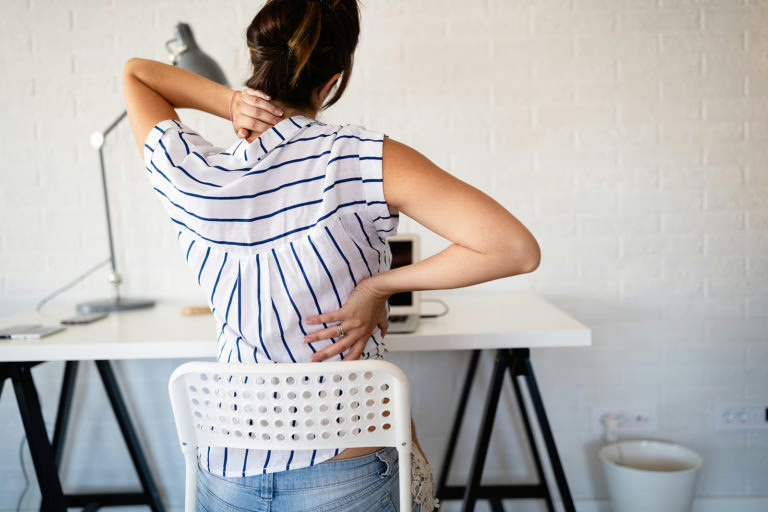
Understand and Relieve Your Back Pain with TCM Link copied! Back pain is a common health problem in the modern society Many people seek TCM treatment for pain conditions. While pain can occur in every part of the body, back pain is one of the more common issues that we see in our patients. Research has shown that approximately 15% to 30% of adults suffer from back pain each year. [1][2] This roughly translates to one out of five adults reportedly having back pain annually! The back covers a huge area, starting from just below the neck all the way to the tailbone. This area can be further divided into three segments, namely upper back (connecting to the neck), mid-back and lower back (connecting to the hip, tailbone, and buttocks). [3] It is important to identify the location of back pain as the causes of pain, treatment given as well as advice for rehabilitation would vary accordingly. Back pain locations and common causes Area Location Common Causes Upper Back Poor posture (looking downwards for prolonged periods) Prolonged deskbound work and lack of exercise Pillow too high or too low Whiplash or other neck injuries Injury from weight-bearing activity Injury during exercise Sudden change of posture or twisting Wear and tear Mid Back Poor posture (slouching on a soft sofa for prolonged periods) Overweight Injury during exercise Wear and tear Lower Back Poor posture (when carrying or lifting heavy items) Prolonged sitting and lack of exercise Overweight Sudden change of posture or twisting motions Overexertion of force Wear and tear Back pain in different age groups In the past decade, there have been reports of back pain in young people rising and this coincides with our observation during clinical practice. [4][5] Most of the back pain observed in this young population are musculoskeletal in nature and recovers well with appropriate treatment, rest and change in poor lifestyle habits. In contrast, back pain in older adults tend to be chronic and recurring – existing evidence suggests that the prevalence of severe and chronic back pain increases with age. Seniors are more likely to develop certain pathologies such as osteoporotic vertebral fractures, tumours, and spinal stenosis. This coupled with various age-related physical, psychological, and mental changes (e.g. spinal degeneration, comorbidities, physical inactivity, age-related changes in central pain processing, and dementia), make the seniors more susceptible to back pain. Therefore, it is important for seniors to get the cause of their back pain diagnosed and treated promptly to prevent the development of debilitating and serious complications. Understanding back pain from TCM perspective Many people turn to TCM treatment for back pain relief. Symptoms of back pain include localized pain, swelling, stiffness, tightness, and tenderness to touch. Upper back pain Can be associated with headache, numbness in the hand Low back pain May also refer to areas down the legs or can cause numbness/weakness in the legs There are many factors causing back pain, and these can be divided into two main categories: external factors and internal factors. Internal factors predispose the body in a vulnerable state (soft tissue weakness and tightness) where injuries are more likely to occur. External factors, on the other hand, are direct insults to the body which result in the stagnation of Qi and Blood in the meridians. Stagnation of Qi and Blood means poor circulation to the muscles, tendons, ligaments, and bones at the back. This results in pain, stiffness and swelling. External factors Internal factors Exposure to Wind, Cold, Dampness Old age Sprains and strains from poor posture, trauma, overuse or overexertion of force Sedentary lifestyle and lack of exercise Poor diet and malnutrition Late-night sleep and insufficient rest TCM home remedies for back pain relief Acupressure massage It is important to identify the painful regions and use the corresponding acupressure points so that it will be effective. Recent studies support the use of acupressure for back pain relief as it improves pain and fatigue symptoms [6], is low risk, low cost and easy to administer. How to massage your acupoints at home: Get into a comfortable position and relax your body and mind Firmly press on acupoint in a circular or up-and-down motion for about 3 minutes at a time You should feel a dull, aching sensation but not excessive pain from pressing too hard Back pain location Acupressure point Jian Jing (GB-21):Situated halfway between the top of the neck and shoulder Jian Wai Shu (SI-14):Approximately 4 fingers lateral to the spinous process of T1 Wai Guan (TH-5):Approximately 3 fingers proximal to the dorsal crease of the wrist, halfway between the radius and ulnar Fu Yang (BL-59):Approximately 4 fingers above the lateral malleolus, in a depression, between the borders of fibula and the Achilles tendon Yao Tong Dian (Ex-UE7):On the back of the hand, midway between the wrist crease and knuckle joint. The points are located between the second and the third metacarpal (finger) bones, and between the fourth and fifth metacarpal bones Exercises for back pain relief Below are some exercises to relieve back muscle tightness to keep them supple and reduce strain on the back. You should do them daily and as frequently as needed. Try to relax while doing the exercise, feel your body loosening as you stretch and do not rush through the exercises. Location Back exercise Upper back Chin tuck Sit in a chair with your feet flat on the floor. Your shoulders should be relaxed and down.Now pull your chin in toward your neck. Count to five, then relax. Repeat 10 times. Chest and upper back stretch Clasp your hands behind your back or behind the back of your chair and stretch your chest forward. Slowly lift your head and stretch as far back as possible. Hold for at least 10 seconds. Repeat 5 times. Low back Low back twist Lie down on the ground. Bend your knees with both feet planted on the ground, hip-width apart.Drop your knees to the left as you turn your head to the right.
How TCM and Western Treatments Can Improve Sexual Dysfunction
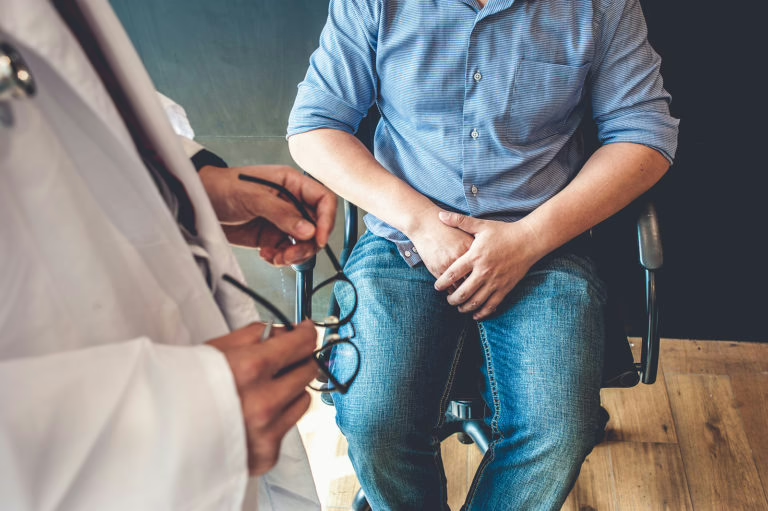
Link copied! Male sexual dysfunction refers to any disturbance of sexual function that prevents individuals or their partner from enjoying sexual activity and constitute conditions such as erectile dysfunction, also known as impotence (with the latter term less commonly used now), premature ejaculation, low libido, delayed orgasm/ejaculation. With the topic of sexual dysfunction remaining taboo, men find it hard to open up and seek professional help. In this article, we discuss male sexual dysfunction in-depth, treatments available as well as top tips to alleviate sexual dysfunction. We hope to change your perspective, sexual dysfunction is just like any other health condition out there. Sexual dysfunction is more common than you think! *Study on Erectile dysfunction [1]; Study on Premature ejaculation [2] While sexual dysfunction commonly affects older men (age 45 and above), it is a condition that can affect adult men of all ages, especially in our generation. The 2 most common forms of sexual dysfunction affecting men are Erectile dysfunction (ED) and Premature ejaculation (PE). [3] Who is more likely to experience male sexual dysfunction? Factors How it affects your male sexual functions Age While older males (above 45) are more likely to be affected, sexual dysfunction can affect men of all ages, especially in our sedentary generation. Ageing, chronic health conditions and poor lifestyle habits are associated with poorer vascular and nerve health, which have a direct impact on men’s sexual functions. Low testosterone levels in men affect libido and erection. Chronic health conditions e.g. high blood pressure, diabetes, heart disease, high cholesterol, low testosterone, nerve-related disease, obesity Poor lifestyle habits Smoking, sedentary lifestyle, excessive alcohol consumption, excessive weight gain Psychological issues e.g. stress, low confidence, sexual anxiety, depression, relationship problems As sexual activity (e.g. desire for sexual intimacy, erection, orgasm, ejaculation) is largely controlled by our nervous system, any form of psychological issues could affect the sexual response. Why is it important to seek help early? On the emotional side of things, proper sexual function is important in any relationship. Having a healthy sex life strengthens your bond and emotional intimacy with your partner. Leaving sexual dysfunction unattended could spiral into a vicious cycle where stress, sexual anxiety and relationship problems worsen your sexual dysfunction. In addition, sexual function problems can be an early warning of other chronic conditions. Recent research concluded, erectile dysfunction might be an indicator of poor cardiovascular health. [4] Can you fully recover from sexual dysfunction? With the right cause identified, doctors and TCM physicians can work out a treatment plan that includes lifestyle and dietary changes to improve your condition. In other words, with the right treatments, the chances of recovering or getting your sexual dysfunction managed are very high. The earlier you seek treatment, the easier it is to manage the condition. “We’re living in a time where information is readily available and help is everywhere. This makes it so much more important to seek treatment from trusted professionals that you are comfortable with.” ~ Dr. Chan Jun Yang What are the main types of sexual dysfunction in men? 1. Erectile dysfunction (ED) (阳痿) It is the repeated inability to achieve or maintain an erection for satisfactory sexual performance. What causes it: Psychological issues (e.g. relationship issues, depression, anxiety, stress, worrying about ED, fatigue) Ageing Poor lifestyle (e.g. excessive alcohol intake, lack of exercise, smoking, obesity) Chronic health problems (high blood pressure, high cholesterol, heart disease, diabetes, nerve disease) Hormonal disorders (e.g. low testosterone) Medications (e.g. antidepressants, certain blood pressure medications) Liver Qi stagnation syndrome Blood-stasis syndrome MingMen Fire weakening syndrome Heart-Spleen deficiency syndrome Yin deficiency raging Fire syndrome Phlegm-Damp syndrome 2. Premature ejaculation (PE) (早泄) It is early or rapid ejaculation that happens before the male and his partner would like. What causes it: Psychological issues (e.g. relationship issues, depression, anxiety, stress, fatigue) Low levels of brain neurotransmitters i.e. serotonin Testosterone deficiency Prostate problems (e.g. infection, inflammation) Concurrent ED (males with ED may form a habit of rushing to ejaculate as they are worried of the inability to maintain the erection) Liver Qi stagnation syndrome MingMen Fire weakening syndrome Heart-Spleen deficiency syndrome Yin deficiency raging Fire syndrome 3. Decreased/ Low libido (性欲减退) It is the lack of sexual desire or sex drive to put it simply. What causes it: Often linked to stress, relationship issues, low self-esteem, and fatigue Medical conditions (e.g. testosterone deficiency) Sexual dysfunctions such as ED and PE Liver Qi stagnation syndrome MingMen Fire weakening syndrome Heart-Spleen deficiency syndrome Phlegm-Damp syndrome 4. Delayed orgasm/ejaculation It is a persistent difficulty or delay in attaining orgasm after sufficient sexual stimulation, causing emotional distress. What causes it: Psychological issues (e.g. relationship issues, depression, anxiety, stress) Reduced penile stimulation due to frequent or unusual masturbation techniques, hyperstimulation (e.g. porn), disparity between fantasy and partner Ageing Medications/substances (e.g. antidepressants, excessive alcohol use) Health conditions (e.g.diabetes, nerve disease, low testosterone) Prostate surgery 5. Sexual anxiety (性焦虑) Also known as sexual performance anxiety typically results from negative thoughts about your ability to perform well. What causes it: Fear of not being able to satisfy partner sexually Self-esteem issues like body weight, body image Problems in your relationship Concern about premature ejaculation or taking too long to reach orgasm Anxiety about not being able to have an orgasm or enjoy the sexual experience Medications (e.g. antidepressants, certain blood pressure medications) Liver Qi stagnation syndrome Phlegm-Damp syndrome Sexual dysfunction from a TCM perspective In TCM, imbalances and disharmony in the body lead to the development of health conditions and sexual dysfunction is one of them. The 6 most common syndromes causing sexual dysfunctions are: MingMen Fire weakening syndrome (命门火衰证) Liver Qi stagnation syndrome (肝郁气滞证) Phlegm-Damp syndrome (痰湿阻滞证) Yin deficiency raging Fire syndrome (阴虚火旺证) Heart-Spleen deficiency syndrome (心脾两虚证) Blood-stasis syndrome (血脉瘀滞证) 1.MingMen Fire weakening syndrome (命门火衰证) Mingmen is an area between the second and third lumbar vertebra. In TCM, our reproductive function and potency is directly linked to the MingMen. Poor MingMen Fire can arise from hereditary conditions, excessive sexual activity and old age. When the
A Day in the Life of Traditional Chinese Medicine Physician Ang Lee Fang
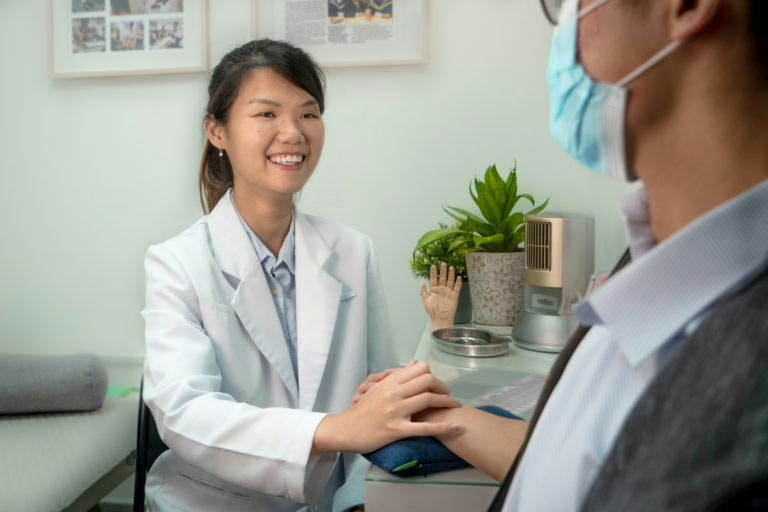
A Day in the Life of Traditional Chinese Medicine Physician Ang Lee Fang Link copied! – This article was originally published on Voices Wellness Physician Ang Lee Fang explains how TCM can appeal to a younger generation and how the traditional practice works in tandem with Western medicine. By Samantha Francis. If Traditional Chinese Medicine (TCM) brings to mind bitter herbal drinks, cupping marks, and acupuncture, you’re not alone. While once widely thought to be pseudoscience, the branch of traditional medicine with its origins in China is now considered a valid practice in the Lion City. In fact, TCM practitioners in Singapore are governed by the Traditional Chinese Medicine Practitioners Act. What does a TCM practitioner do? And are their treatment plans in conflict with Western medicine? We speak to physician Ang Lee Fang from Oriental Remedies Group to understand TCM’s place in the modern world. What’s in a day’s work for you? I spend the majority of my day with my patients. While the more experienced physicians see more than 30 patients a day, I’m slowly making my way there. I pride myself on accurately diagnosing and prescribing the appropriate treatment for my patients—nothing beats the satisfaction of seeing their weekly improvements. My role as a physician in a modern TCM clinic extends beyond seeing patients. I’m also involved in creating educational content for our patients and the public, as well as training the team on common health conditions. What’s the most fulfilling part about your job and what’s the most challenging? The most fulfilling part is when I see my patients recover, especially those who have failed to see improvement from prior treatments. I enjoy taking on challenging cases and conditions. When my patients feel their pain and discomfort going away, it’s all worth it. The most challenging part is that many patients expect TCM practitioners to be old because they relate the experience to age. Some are surprised by my youth and may hesitate to fully heed my advice. Thankfully, they become receptive once they see good results from my treatment plan. How do you think TCM has evolved and changed in Singapore over the past decade or so? Singaporeans are now more accepting of TCM. Back then, many held the idea that TCM and western medicine were mutually exclusive. With time and research, it has been proven that the two can work together to bring greater benefits to patients. For example, TCM is an effective complementary treatment for cancer as herbs can be used to minimise the side effects of conventional cancer therapies. These include reducing nausea and increasing appetite, which significantly improves one’s quality of life. The integration of TCM and technology results in better treatment and diagnosis. At Oriental Remedies Group, we offer technology-enhanced therapies that complement traditional treatments for better and faster results. Many of us are graduates from the NTU Chinese Medicine course, where we were schooled in both Biological Sciences (western human anatomy and body systems) and TCM. This allows us to tap on both Eastern and Western perspectives to provide patients with a more efficacious treatment plan. What’s one thing you wish more people knew about TCM? Many think that TCM is only good for sprained ankles or body aches. While it is true that acupuncture is effective in pain management and muscle tension, there is so much more that it can offer. Often, health problems arise due to disruptions in homeostasis (a stable and balanced internal state of the body) and TCM has the ability to regulate your body systems and help improve your quality of life. Some serious chronic conditions that TCM can support include (but are not limited to) male and female fertility, eczema and skin issues, autoimmune conditions, mood disorders, and cardiovascular diseases. It can also treat functional illnesses like “tiredness” and “lethargy”—conditions that are not necessarily recognised as health issues in western medicine but can greatly impact one’s quality of life. How does TCM work in harmony with Western medicine? Or does it have to be one or the other? TCM often acts to support Western medicine. The combination of both is already widely adopted by many in China, which I witnessed first-hand when I shadowed physicians in the hospitals there. More often than not, the two can be used in conjunction to bring about better overall results than using only one form of treatment. One example is the treatment of fertility conditions. TCM can be used to increase the success rate of IVF/IUI via acupuncture and herbal medication. Even after successful conception, TCM can continue to support the mother-to-be in stabilising the pregnancy and development of a healthy fetus. What are some challenges that come with making TCM relevant and appealing to a younger audience? As our younger audiences are more well-read and more likely to consume information online, they may read about the allopathic view of healing when it comes to specific conditions and therefore disregard TCM. Understandably, TCM may be confusing with abstract concepts such as Yin, Yang, and Qi to the general public. TCM may be seen as old-fashioned by those who do not believe in concepts such as heatiness and dampness. Other sceptics may also prefer methods backed by science. Despite these challenges, I believe we make TCM more relevant to all age groups through education on the right platforms and presenting facts through scientific papers, research, and clinical tests. What does wellness mean to you, and why? Beyond physical health, it’s important to be mentally and emotionally healthy as well. Often, people find it challenging to function properly due to stress. As such, it is vital to address these issues to prevent lapses in concentration and a lack of motivation. With healthy mental and emotional states, people can become almost twice as productive as before. How do you relax when things get too stressful? I enjoy going for a walk or a swim when things get too stressful. Exercise is definitely one of the ways I relieve stress
Improve Male Sexual Function, Treat Erectile Dysfunction And Premature Ejaculation The TCM Way

Link copied! Erectile dysfunction (ED) and premature ejaculation (PE) are the 2 most common forms of sexual dysfunction affecting men [1]. According to a survey of almost 5,000 men in Asia-Pacific, PE is known to affect 13%-16% of all men while ED affects 5%-8% [2]. Poor sexual function and low libido can have deleterious effects on a man’s quality of life and his relationship with his spouse. Yet, male sexual health is something that most Asian men loath discussing even though the attitudes of our society are increasingly westernized. Although erectile dysfunction is often laughed at for indicating male impotence, studies have shown that it is a tell-tale sign of other underlying health conditions that might warrant our attention [3]. Erectile dysfunction management methods like Viagra or Ciali are well known. However, most people remain uninformed about the treatment of premature ejaculation. Today, we dive into the root causes of sexual dysfunction and open your treatment options for better male sexual function. You do not need to live with sexual dysfunction. With proper treatment, lifestyle and diet changes, Traditional Chinese Medicine (TCM) can help you regain sexual function and confidence. *Erectile dysfunction (ED) is the inability to get and/or keep an erection firm enough for sex.*Premature ejaculation (PE) occurs when a man ejaculates sooner during sexual intercourse than he or his partner would like. How can Oriental Remedies Group help men who are experiencing sexual dysfunction? Step 1: An honest and self-directed assessment of sexual function The simplest and most cost-effective way to assess the severity of sexual dysfunction is through a self-assessment survey. You can use the International Index of Erectile Function (IIEF) survey to evaluate the severity of erectile dysfunction and libido issues. For premature ejaculation, use the Premature Ejaculation Diagnostic Tool (PEDT) survey. Evaluating Erectile Function Here are 6 IIEF questions (Qns 1 – 5, 15) from The British Association of Urological Surgeons (BAUS) patient questionnaire. These questions are determining considerations that fall under domain A (Erectile Dysfunction) of the questionnaire. The British Association of Urological Surgeons (BAUS) The maximum score for these questions (Qns 1-5, 15) under domain A is 30. A score of 14 and below suggests low erectile function, a score between 15 to 25 suggests moderate erectile function and a score from 26 and above suggests high erectile function. As the cause of erectile dysfunction can be physical or psychological, you can try taking a nocturnal penile tumescence (NPT) test (erection self-test) to determine if it is psychological or not. Simply cut a 2-cm wide strip of paper that is long enough to go around the penis with a little overlap. The paper can be secured with a piece of 1-inch tape. Steps to perform an NPT: Go commando or change into loose-fitting underwear before you go to bed. Stick half-inch of the tape on one end of the paper, circle the strip of paper around the shaft of the flaccid penis and secure it with the remaining tape. The strip of paper should be snug enough so that the paper breaks apart if you have an erection. It is highly recommended to sleep on your back so the strip will not be affected by your movement. Repeat this test for 3 consecutive nights. Interpreting Results Check to see if the strip is broken when you wake up in the morning. If it is, you could have had an erection in your sleep. This indicates that your penis physically functions properly, indicating that any possible erectile issues are mostly psychological in nature. Rest assured there are treatments that can help both physical and psychological erectile dysfunction – acupuncture effectively regulates stress and anxiety to improve erection quality in men who suffer from psychogenic erectile dysfunction. Evaluating Libido These two IIEF questions (Qns 11,12) from BAUS’s patient questionnaire fall under domain C (Sexual Desire) which evaluates your sex drive/libido. The British Association of Urological Surgeons (BAUS) The maximum score for Qns 11, 12 is 10. Scoring 6 and below indicates a low libido. If the sex drive or libido is low, we recommend taking a blood test to examine your testosterone and prolactin levels – these are male hormones that affect your libido. Evaluating Premature Ejaculation We use the PEDT survey to evaluate premature ejaculation. A score of 8 or lower indicates no premature ejaculation, 9 or 10 indicates probable premature ejaculation, and 11 or higher indicates premature ejaculation. The British Association of Urological Surgeons (BAUS) Step 2: Understand the root cause from a TCM perspective Traditionally, sexual function and reproductive ability are thought to reside in the Kidneys and those suffering from Kidney deficiency syndrome would experience a loss of sexual function. Today, in this age of overnutrition, new studies have shown that the loss of sexual function due to Kidney deficiency syndrome is gradually becoming less common. Instead, the loss of sexual function is found to be more closely related to Liver Qi stagnation syndrome, Blood-stasis syndrome and Phlegm-Damp syndrome due to the stresses of modern living, our sedentary lifestyles and the indulgence of processed foods. Here’s a quick walk-through of the above-mentioned syndromes and their causes: i. Liver Qi stagnation syndrome TCM believes that the Liver is in charge of regulating emotions. Thus, an unhealthy work-life balance and being overly stressed at work causes our emotions to be in a constant state of flux. Over time this wears out the Qi in the Liver meridian causing Liver Qi stagnation syndrome. As the Liver meridian is directly linked to the penis, Qi stagnation at the Liver will lead to poor erectile functions. ii. Blood-stasis syndrome Other than increasing the burden on our digestive system, over-consumption of cold or raw food also causes the body to cool down which hampers the proper flow of Blood according to TCM theory – Blood should flow first in our stomach and subsequently to the rest of our body. Paired with a sedentary lifestyle, poor Blood flow can develop resulting in Blood-stasis syndrome. In severe instances
5 Ways To Strengthen Your Immunity Naturally | The TCM Way
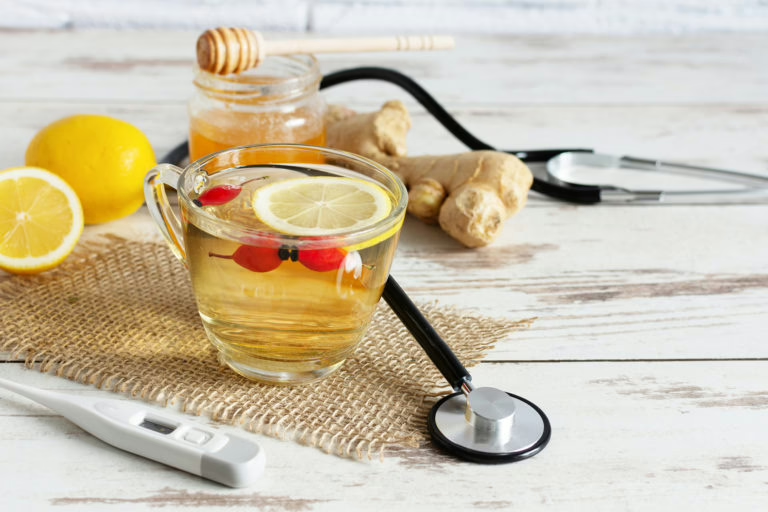
Link copied! A collaboration with Eatprayflying, originally posted on Eatprayflying.com Traditional Chinese Medicine (TCM) came under the global spotlight earlier this year when it served a critical role in China’s battle with COVID-19. As scientists around the world are racing against time to formulate a vaccine, more individuals worldwide are turning to traditional remedies to strengthen their immune system. In TCM, your body houses a vital energy called Qi which essentially creates a protective shield, protecting you from external pathogens. This is why TCM focuses on nourishing your Qi to strengthen your immune system! Signs of weak immunity A simple 👅 test can also indicate the state of your immunity – take a mirror or use your smartphone camera to do a quick check!A tongue with scallop outline/teeth marks and a greasy coating (middle picture) is a sign of Qi deficiency and weakened immunity. Other signs of a compromised immune system: Frequent colds/ flus/ body aches Chronic Fatigue Digestive Issues Chronic skin conditions, allergies and inflammation So what can you do to improve your immunity? 1) Eat yellow foods Did you know? Nearly 70% of your immune system is located in your digestive tract? This is why your gut health is so important in maintaining your overall health and immune system. According to TCM’s 5 element theory, the spleen is responsible for your body’s digestive functions and is linked to the colour yellow. Hence, yellow foods helps to nourish your spleen and improve your gut health. Best yellow foods for healthy diet: Pumpkin Sweet Potato Ginger Turmeric 2) Incorporate Huang Qi (Astragalus) for immunity Huang Qi (Astragalus) is one of the most commonly used herbs in TCM for Qi nourishment and has been an ancient favourite for more than 2000 years! It also has immunoregulatory, anticancer, antitumor and antioxidant properties, making it a powerful all-rounder. [1] Pro-tip: Choose The Right Huang Qi I always go for premium Huang Qi which is naturally grown and harvested – this means that they are chemicals & pesticides free! How to tell organic wild Huang Qi from farmed ones? 💛 Colour – Sliced organic Huang Qi’s yellow colour can vary from plant to plant depending on the environment it grows in. Cultivated ones tend to have a stronger yellow colour. 🌿 Fibre Pattern – Fibres on organic Huang Qi slices are not so defined and the pattern also varies from plant to plant. How to use Huang Qi? Physician Leong Weizhen from Oriental Remedies Group (TCM chain in Singapore) recommends using 1-3g of Huang Qi (with up to 1.5L of water) to brew tea on a daily basis 🍵 *Editor’s note: I’m personally very lazy to concoct my own tea so I usually opt for pre-packed tea bags like Oriental Remedies Group’s Immunity Tea! Oriental Remedies Group Immunity Tea 3) Massage acupressure points Use 4 of your own fingers to get an estimate of 3 inches TCM Physician’s recommendations Massage each point twice a day using finger massage/palmar massageFinger Massage: up to 5mins each timePalmar Massage: 10 – 15mins each time ☝🏽 Finger massage Press in deep and rotate your fingers, your fingers should be in contact with your abdomen as you massage the points. ✋🏽Palmar massage Place both palms facing your abdomen, one palm on top of the other and rotate both palms together in a single direction. 4) Reduce stress and get enough sleep Chronic stress and sleep deprivation (sleep hrs and quality) can weaken your Qi and immunity. This is very common in busy professionals who lead a stressful life with little time to unwind and rest. 💆🏻 Destress and refresh Set aside time for relaxation – if you don’t plan to take a break, you plan to not take a break. Prevent missing out on your downtime by creating an event on your work calendar, treat it as a task instead of an indulgence! 🛌 Get enough sleep hours and quality sleep Adults should aim to get 7 hours of good quality sleep daily. If you find it difficult to fall asleep or wake up feeling lethargic despite enough sleep hours, you could be making these 3 mistakes. More tips on how to sleep better here I used to think I could repay my slept debt during the weekends, little did I know that it was affecting my sleep quality! I shared more about tips on how to sleep better in another post – learn more! 5) Improve the air quality of your surroundings Researchers found that air pollution can suppress the immune system’s natural functions and was linked to causing a greater severity of asthma symptoms and lower lung capacity. [2]Prolonged exposure to poor air quality can cause chronic inflammation, asthma is merely one of the resulting conditions due to a malfunctioning immune system. Do indoor plants help? While plants are great additions to spruce up your place, their abilities in purifying the air of pollution has been overstated. They are unable to clean the air quickly enough to improve the air quality. [3] 🍃 Air Ionisers are more effective in cleaning the air Air ionisers emit negative ions that eliminate airborne pollutants including dust, bacteria and even viruses. Negative Ions work by attracting positively-charged pollutants in the air by making them heavier and fall to the ground. As a result, the air that we breathe in is now cleaned and safer. [4] PS, I invested in a Reltec’s Air Ioniser years ago and it is still going strong. It is a robust machine that is portable and small so you can keep it anywhere and move it to any indoor area as you wish. On Sale: Reltec’s Air Ioniser As Singapore reopens gradually, there will be a greater need to protect ourselves. Masks and social distancing habits are definitely a must but you can do more by strengthening your immunity naturally, the TCM way! If you need professional advice on strengthening your immune system, call/WhatsApp us at +65 8087 0486 to book an appointment with our bilingual physicians. Disclaimer:
When Yoga and TCM blends
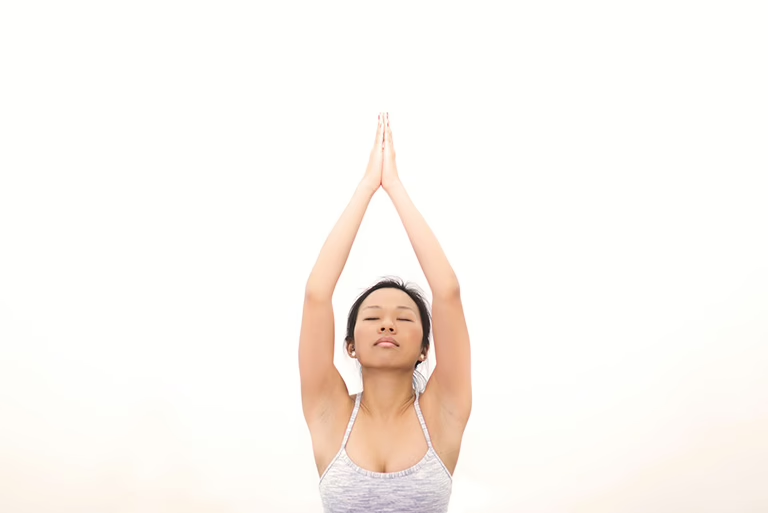
Link copied! Yoga and Traditional Chinese medicine (TCM) appear to be two disconnected wellness protocols with distinct origins. Yoga is believed to originate in India circa 3000 B.C., with stone-carved figures of yoga postures found in the Indus Valley depicting the original poses and practices, while TCM dates back more than 3,500 years of Chinese medical practice that includes herbal medicine, acupuncture and cupping therapy. Yet, increasingly, practitioners who marry the two are finding it effective to better help patients and clients. “Adding TCM into your yoga practice creates the opportunity for you to observe the nuances and subtleties of your body on a deeper level. You can then use this newfound knowledge to help you move toward balance.” – Tiffany Cruikshank, founder of Yoga Medicine® To understand why incorporating Traditional Chinese Medicine into your yoga practice can amplify your results, one first needs to understand some fundamentals of TCM. In TCM, there are twelve regular meridians which move the Qi (energy) and Blood, each represent a single organ and connects the internal (organ) to the external (exterior skin). Smooth flowing of Qi through the 12 meridians balances Yin Yang within the body and governs our body functions. On the other hand, stagnation of Qi flow in a particular meridian will result in issues of the organs and areas where the meridian passes through. Many TCM practitioners engage in Qigong practice to ensure good flow of Qi, healthy body constitutions and ultimately mind-body-soul balance. Similarly in yoga, the concept of smooth flowing energy throughout the body essential to the well-being of a yogi. Yin Yoga engages in restful, long-held postures and primarily focus on our body’s meridians.1 Through the poses, yin yoga helps to stimulate the energy pathways by targeting the meridians. When we hold each pose for longer periods of time, we are placing a stress on the fascia (connective tissues) that holds every cell in the body.2 The fibrous connective tissues are strong and springy when you are healthy, rigid and taut when we have a sedentary lifestyle.3 We can dissipate energetic stagnation by activating, squeezing and stretching our body tissues where meridians are located. Fascia, like meridians, will benefit with smooth flowing energy through it. The twelve meridians are named after its respective associated Organ and are associated with various emotions such as fear, excitement and anger. Excessive emotions are viewed to disturb the harmony in one’s body. In TCM when we treat an organ and its respective emotions, we help to ensure good Qi flows and balance of the autonomic nervous system. This balance is critical to our holistic well-being. Source: www.pexels.com In yoga practice, it is important to still our mind and body to achieve harmony in the body. Many occasions yoga instructors advise students to engage good breathing techniques as these not just help with good circulation of oxygen through the muscles, but it also has calming effects on the mind. Breath controls the body, mind, and emotions.4 In the process of calming the mind, balancing our emotions, both TCM and yoga actively utilise meditation as a key approach. Many people find it difficult to meditate as we are not used to it. Yoga postures are a great way of preparing the body for meditation, stimulating the flow of energy and balance to our spine and our mind.5 They work hand-in-hand and are interrelated to bring about higher awareness of our body and conscience. Harvard researchers have also found that meditation not only reduces stress but can produce scientifically measurable effects on the brain’s physiology.6 If you are looking for inspiration to start meditating, try reading real stories from people on their mediation journey and how it helped them.7 Source: Natural Health Zone As more research goes into TCM and yoga, there will bound to be more positive benefits by blending both traditional wellness protocols together. If you are keen to find out more about marrying Traditional Chinese Medicine with Yoga, check out our Partner Jal Yoga. info@jalyoga.com.sg Alexandra Studio 991 Alexandra Road #01-03A (S)119964 map 6251 0710 Upper Bukit Timah Studio 260 Upp Bt Timah Rd #02-01 (S)588190 map 6732 1483 Katong Studio 131 East Coast Road #03-01 (S)428816 map 6241 3758 Upper Thomson Studio 213 Upp Thomson Rd #01-01 (S)574348 map 6258 9621 Woodlands Studio 30 Woodlands Ave 1, #02-5A, (S)739065 map 6909 9829 To learn more about Oriental Remedies Group, visit our homepage or contact us via Whatsapp at +65 8087 0486 Disclaimer: The content on this page is for informational and educational purposes only. Such medical information may relate to disease, injury, drugs and other treatments, medical devices and/or health products. Medical information does not amount to advice, and if advice is needed an appropriate professional help should be sought. The disclaimer asserts that no warranties or representations are given in respect of the medical information, and that the website operator should not be held liable if a user suffers any injury or loss after relying upon the medical information. RELATED TOPICS YOU MIGHT ALSO LIKE